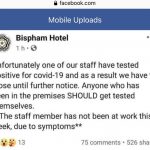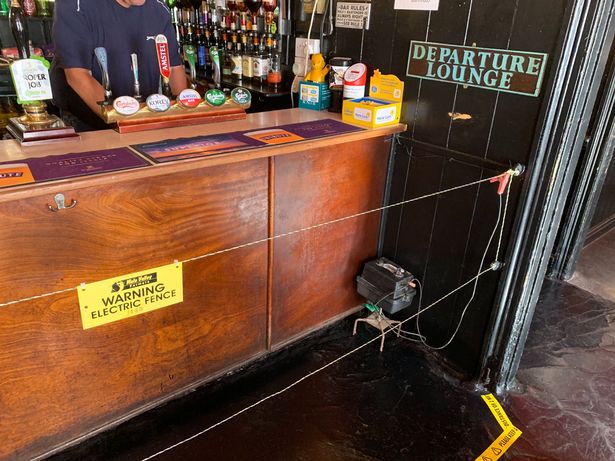 The week of melting is a great week. It occurs usually two weeks before the week of everything smells like dog poop. The week in between is called the week of maybe it won’t happen this year. One lad was thinking how nice it would be if something didn’t happen, as illustrated to the right. Max shared the image and voted it top entry for the Hogmanay Xmas Yuletide Kwanza Photo Contest 2021. It is a study of humankind’s folly… or true role of beer… or something… whatever it is we are advised by someone presented that balance was in fact recovered.
The week of melting is a great week. It occurs usually two weeks before the week of everything smells like dog poop. The week in between is called the week of maybe it won’t happen this year. One lad was thinking how nice it would be if something didn’t happen, as illustrated to the right. Max shared the image and voted it top entry for the Hogmanay Xmas Yuletide Kwanza Photo Contest 2021. It is a study of humankind’s folly… or true role of beer… or something… whatever it is we are advised by someone presented that balance was in fact recovered.
Much doings to report upon this week. First, Stan wrote about something I have never had the slightest interest in – beer recommend / review / rate apps. If you are spending any time at all on them, you need a goldfish in your life. Something real. But Stan persists, as they say. And he delved a bit into the phenomenon to point out one app which actually had detail:
Next Glass 1.0, circa 2015, was something different. It was one of several drink recommendation apps that came and went about that time. Some got tagged as the “Pandora for beer.” For First Glass, that made sense because it took a scientific approach similar to Pandora when collecting data… [F]eature-based systems begin by measuring specific attributes of songs (or beers). Pandora created the Music Genome Project and employs musicians to catalog key elements of every song in its database. Next Glass mapped the chemical makeup of individual beers, forgoing any effort to quantify a beer based on its descriptive characteristics.
All of which means there are graphs. Graphical displays of information. Why did it fail? Beer failed it: “…the company was never going to be able to collect mass spec information on the thousands of new beers released every week…” A.K.A. T.M.I.
 Victim of Maths has tweeted an interest set of… graphs! Graphs on the effect of the pandemic on alcohol consumption patters in different nations. The form of graph itself is very helpful. But look how consumption goes up in the US while dropping in terms of the tavern trade. Who benefitted from that? White Claw? Local actual craft brewers delivering to home? Interesting stuff.
Victim of Maths has tweeted an interest set of… graphs! Graphs on the effect of the pandemic on alcohol consumption patters in different nations. The form of graph itself is very helpful. But look how consumption goes up in the US while dropping in terms of the tavern trade. Who benefitted from that? White Claw? Local actual craft brewers delivering to home? Interesting stuff.
Much talk on alewives and witches again which I think is up there with the role of Sumerian goddess of beer, Ninkasi, in medieval Norse brewing. There seems to be a drive to switch one story of exclusivity with another an then make it universal rather than particular. Dr. Christina Wade made this very good point in relation to this topics and one which is useful in any other historical studies which I present as a merged mega-tweet:
That is a really important avenue of research. And, in which case, we must get hyper-specific. Brewing in the Middle Ages could be a high-status, non-liminal, position for women. If we take the example of late medieval and early modern England, which is what these sorts of articles seem to be meaning, we can see that women who brewed were vilified. And men absolutely did accuse and lie about things to ruin women’s brewing businesses. We have primary sources for that in England. But as to whether this took the form of witch accusations the data is lacking. This may be because the populations who brewed and who were accused of witchcraft overlap. That is to say, single/widowed/poor women. That said, married women also brewed with great regularity. So it’s largely speculative.
This raises an interesting question. Why and should we participate in the continuation of myth telling? Even as myth correction. On the one hand it is organic and bolsters identity often in a healthy way. I myself am quite pleased to be generically connected to the faerie folk and advise all of you to watch your step accordingly. This, however, is quite distinct from the role I play from time to time of amateur historian – even when I get paid for that part of my research and writing. Nothing is as shockingly and clarifyingly accurate as a primary source. You can’t get around that sort of thing. You must face it. So how does one do both in an area of our collective culture as laden with fib and story telling as beer and brewing?
Never a happy event. A founder leaves a brewery.
Wee Beefy, one who has written of the horrors of the experimental craft alcopops that are too prevalent these days, has discovered a new love in an very unexpected form:
Last year or before, Maltgarden Browari came along. I had already tried a few of their excellent stouts, along with stumbling through opening their ridiculous wax capped can, and then bought a can of Tzatziki pastry sour with Pink Guava, Mango and cucumber… I drank the whole can in about ten minutes. It was ludicrously easy drinking – but also featured a distinctive but perhaps created tzatziki flavour along with the excellence of the pastry elements. It tasted very strongly of the cucumber and as I admit, the tzatziki I imagined but impressively the other flavours blended in so well together! I used it as a palate cleanser…
Me, I am physically revolted by that description but celebrate the freedom.
One weighs carefully whether one mentions BrewDog anymore given they are (i) now an international brewery with few links to micro or craft and (ii) they are adherents to a form of serial stupid that is beyond all reckoning – but… but… this one is up there with Sam Adam’s 2002 “Sex for Sam” promotion that led to charges, humiliation and (in a less than round about way than you might imagine) the Brewers Association as we know it. Trade Unionist Kmflett neatly summarized the seemingly sordid scene:
A post noted that Brewdog Indianapolis had sacked female and LBTQ employees on International Women’s Day apparently looking for a change in culture at the bar, possibly to a white male workforce. The CEO of Brewdog USA tweeted that of course Brewdog don’t discriminate while the London based head of Brewdog bars globally tweeted that he was investigating. On the one hand he was aware of an issue on the Indianapolis bar. On the other hand people are not sacked on the basis of gender or sexuality and if anyone had done that they’d be off too.
 Lordy. There’s the statement from those let go. To date, no response from Mr. Jim Watt via Twitter except to point out how carbon neutral they are trying to be in addition, apparently, to be anti-discrimination neutral. It’s sad. I just checked my emails and there I was care of Stonch giving James himself advice in exchanges for photo contest prizes. It was all about how to run a blog about his wee brewery… and there it is now… crushing hopes and dreams.
Lordy. There’s the statement from those let go. To date, no response from Mr. Jim Watt via Twitter except to point out how carbon neutral they are trying to be in addition, apparently, to be anti-discrimination neutral. It’s sad. I just checked my emails and there I was care of Stonch giving James himself advice in exchanges for photo contest prizes. It was all about how to run a blog about his wee brewery… and there it is now… crushing hopes and dreams.
Finally, you will note every week I list below any number of podcasts related to good beer. This week I tweeted a question which got mucho response:
Honestly, how much time a week do you have for listening to beer podcasts? 27 minutes? Three and a half hours? I think of this when I encounter the 68th new podcast this year that’s over an hour long, not much edited and 7-11% filled with umms, errs and insider giggling.
I mean it quite seriously as a question about the medium. How many could you keep up with. I myself uses the FF technique in which I take a 35 minute podcast and reduce it to 5 by clicking and hunting for the actual bit of most interest to me. For all the “beer editors” out there who seem to be getting chump change for taking away the new writers voice in exchange for the dull tried and true, it would be good if there was a similar thing for podcasts, a central hub of some sort, a single global beer podcast editorial committee who could take these rambles and turn them into an actual magazine of the air of some sort. Some folk who could say “no” and who could also say “yes, this!” Listeners await.
Soon it will be spring. That makes for happy. For more happy, check out the weekly updates from Boak and Bailey mostly every Saturday, plus more with the weekly Beer Ladies Podcast, at the weekly OCBG Podcast on Tuesday and sometimes on a Friday posts at The Fizz as well. There is more from the DaftAboutCraft podcast, too. And the Beervana podcast. And sign up for Katie’s weekly newsletter, The Gulp, too. Plus the venerable Full Pint podcast. And Fermentation Radio with Emma Inch. There’s the AfroBeerChick podcast as well! And also look at Brewsround and Cabin Fever. And Ben has his own podcast, Beer and Badword – when he isn’t in hiatus as at the mo, more like timeout for rudeness. And remember BeerEdge, too.



















 that good day which included the comment ” Jimmy hasn’t gone to bed after his night shift tarmacking the roads.” Nice. I’m on Team Jimmy. Jeff
that good day which included the comment ” Jimmy hasn’t gone to bed after his night shift tarmacking the roads.” Nice. I’m on Team Jimmy. Jeff